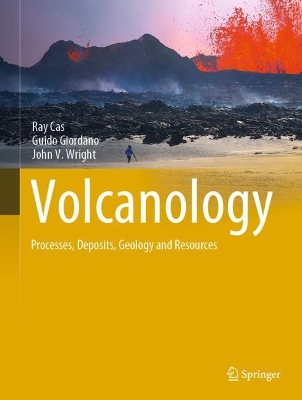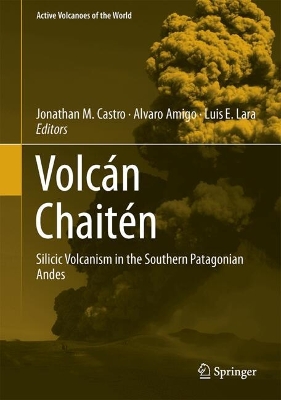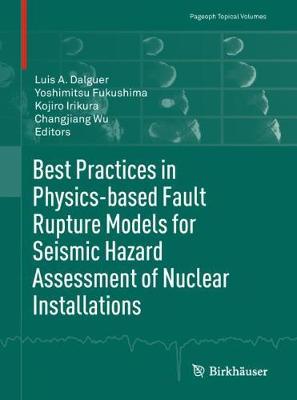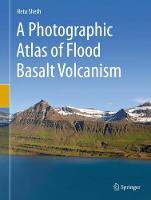Earthquakes and Multi-hazards Around the Pacific Rim, Vol. II
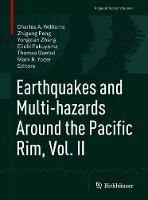 -15%
portes grátis
-15%
portes grátis
Earthquakes and Multi-hazards Around the Pacific Rim, Vol. II
Peng, Zhigang; Williams, Charles A.; Yoder, Mark R.; Zhang, Yongxian; Fukuyama, Eiichi; Goebel, Thomas
Birkhauser Verlag AG
05/2018
205
Mole
Inglês
9783319922966
15 a 20 dias
457
Descrição não disponível.
Earthquakes and Multi-Hazards Around the Pacific Rim, Vol. II: Introduction.- Subduction Mode Selection During Slab and Mantle Transition Zone Interaction: Numerical Modeling.- Characteristics of Viscoelastic Crustal Deformation Following a Megathrust Earthquake: Discrepancy Between the Apparent and Intrinsic Relaxation Time Constants.- Interpretation of Offshore Crustal Movements Following the 2011 Tohoku-Oki Earthquake by the Combined Effect of Afterslip and Viscoelastic Stress Relaxation.- Rupture Characteristics of the 25 November 2016 Aketao Earthquake (Mw6.6) in Eastern Pamir Revealed by GPS and Teleseismic Data.- Source Characteristics of the Northern Longitudinal Valley, Taiwan Derived from Broadband Strong-Motion Simulation.- Fault Structural Control on Earthquake Strong Ground Motions: the 2008 Wenchuan Earthquake as an Example.- Voids and Rock Friction at Subseismic Slip Velocity.- A Dimensional Analysis Method for Improved Load/Unload Response Ratio.- Natural Time, Nowcasting and the Physics of Earthquakes: Estimation of Seismic Risk to Global Megacities.- Natural Time and Nowcasting Earthquakes: Are Large Global Earthquakes Temporally Clustered?.- Optimal Scaling of Aftershock Zones Using Ground Motion Forecasts.- Probabilistic Seismic Hazard Assessment for Himalayan-Tibetan Region from Historical and Instrumental Earthquake Catalogs.- Scenario-Based Seismic Hazard Analysis for the Xianshuihe Fault Zone, Southwest China.- Tsunami Simulation Method Assimilating Ocean Bottom Pressure Data near a Tsunami Source Region.
Este título pertence ao(s) assunto(s) indicados(s). Para ver outros títulos clique no assunto desejado.
Multi-hazards;Pacific Rim;induced and triggered seismicity;failure mode;Pattern Informatics Method;radar interferometry;rate-and-state friction;seismic gap;tsunami hazard;earthquake simulators;ETAS;source and path effects;earthquake forecasting;apparent stress;source parameter inversion;social sensors
Earthquakes and Multi-Hazards Around the Pacific Rim, Vol. II: Introduction.- Subduction Mode Selection During Slab and Mantle Transition Zone Interaction: Numerical Modeling.- Characteristics of Viscoelastic Crustal Deformation Following a Megathrust Earthquake: Discrepancy Between the Apparent and Intrinsic Relaxation Time Constants.- Interpretation of Offshore Crustal Movements Following the 2011 Tohoku-Oki Earthquake by the Combined Effect of Afterslip and Viscoelastic Stress Relaxation.- Rupture Characteristics of the 25 November 2016 Aketao Earthquake (Mw6.6) in Eastern Pamir Revealed by GPS and Teleseismic Data.- Source Characteristics of the Northern Longitudinal Valley, Taiwan Derived from Broadband Strong-Motion Simulation.- Fault Structural Control on Earthquake Strong Ground Motions: the 2008 Wenchuan Earthquake as an Example.- Voids and Rock Friction at Subseismic Slip Velocity.- A Dimensional Analysis Method for Improved Load/Unload Response Ratio.- Natural Time, Nowcasting and the Physics of Earthquakes: Estimation of Seismic Risk to Global Megacities.- Natural Time and Nowcasting Earthquakes: Are Large Global Earthquakes Temporally Clustered?.- Optimal Scaling of Aftershock Zones Using Ground Motion Forecasts.- Probabilistic Seismic Hazard Assessment for Himalayan-Tibetan Region from Historical and Instrumental Earthquake Catalogs.- Scenario-Based Seismic Hazard Analysis for the Xianshuihe Fault Zone, Southwest China.- Tsunami Simulation Method Assimilating Ocean Bottom Pressure Data near a Tsunami Source Region.
Este título pertence ao(s) assunto(s) indicados(s). Para ver outros títulos clique no assunto desejado.
Multi-hazards;Pacific Rim;induced and triggered seismicity;failure mode;Pattern Informatics Method;radar interferometry;rate-and-state friction;seismic gap;tsunami hazard;earthquake simulators;ETAS;source and path effects;earthquake forecasting;apparent stress;source parameter inversion;social sensors

